The 25 Greatest Supercars of the 21st Century (So Far)
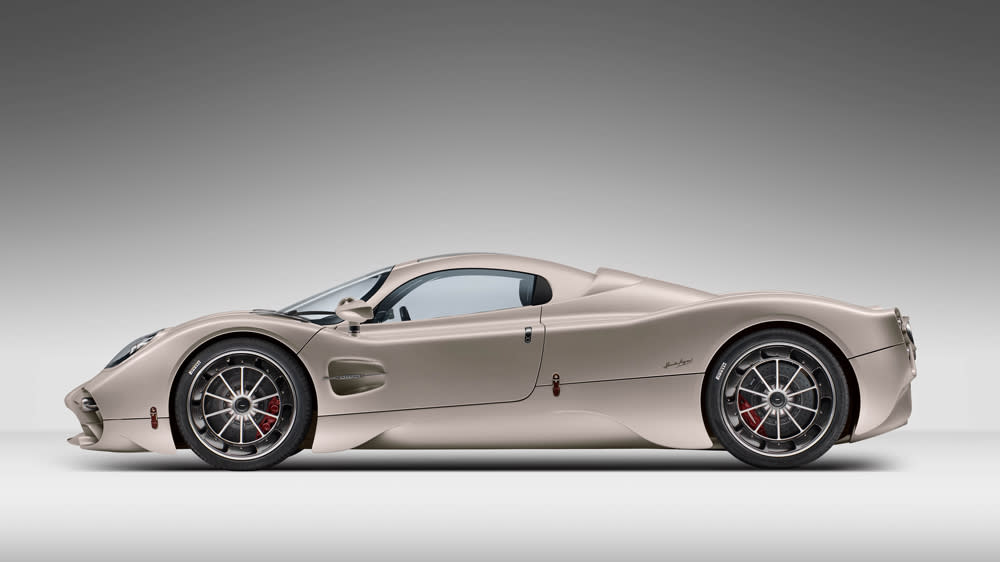
There is no denying that the landscape of the automotive industry is seismically shifting. Advances in autonomous driving, ubiquitous ride-sharing platforms and even new app-driven models for ownership, while convenient, do not nurture a love for the automobile or contribute to any semblance of car culture.
Yet it would be a mistake to assume that younger generations are becoming unilaterally apathetic. How could they? We are at a confluence of tech and tradition, analog and artificial intelligence and nowhere is this more evident than with the current ultra-high-performance machines on the market.
More from Robb Report
The Koenigsegg Jesko Absolut Just Broke Another World Record
First Drive: The 690 HP McLaren Artura Spider Deftly Balances Grunt and Grace
Car of the Week: This Pristine 2015 McLaren P1 Could Fetch $1.3 Million at Auction
To that end, we’ve updated our list of the 25 greatest supercars so far this century, and it’s by all means an exercise in subjectivity. Some models that made it here may not be the fastest production cars out there or the most agile, but they have either fueled our imagination or introduced new levels of innovation. And honestly, in some cases, they’re just the ones our inner child feels compelled to draw . . . all the time. And the fact that these will all become the classics of the future has us confident that when it comes to the life automotive, the kids are going to be just fine.
Best of Robb Report
Sign up for Robb Report's Newsletter. For the latest news, follow us on Facebook, Twitter, and Instagram.
Click here to read the full article.
McLaren F1
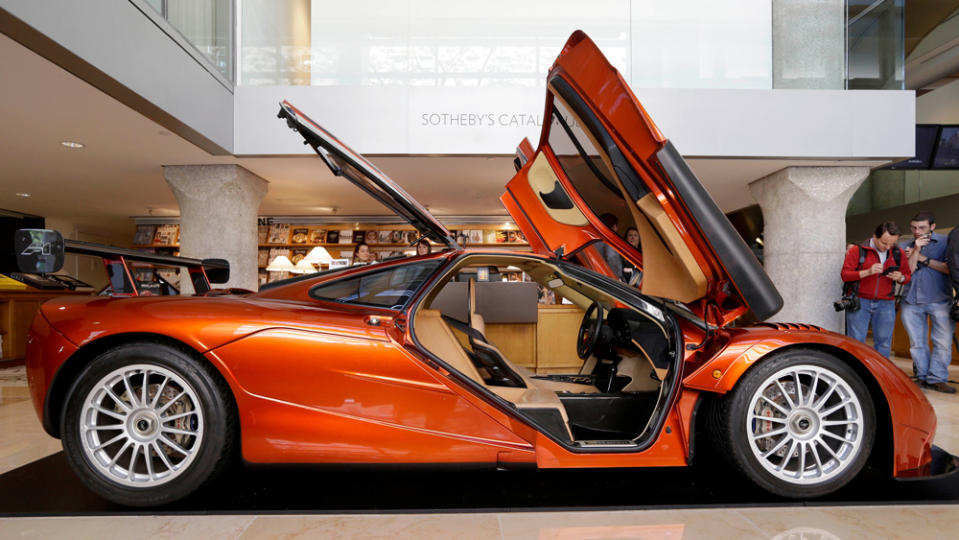
Ok, so the first one on this list is technically from the last century, the 1990s to be exact, but it’s here as a benchmark and baseline for the models that follow. A top speed of 231 mph. Back in 1992, no other production car had ever gone that fast. It was mind-blowing. But that’s what the McLaren F1 did; blow minds. With its feather-weight carbon-fiber chassis, single-minded focus on shaving weight and a bespoke six-liter, 627 hp BMW V-12 for power, it could sear to 60 mph in just 3.2 seconds.
Costing nearly $1 million at launch, it was also mind-blowingly expensive. Today, however, in the rare chance that one of the 106 examples comes to market, expect to pay around $20 million. The ultimate supercar? Some would say there’s no question. — Howard Walker
Ferrari LaFerrari
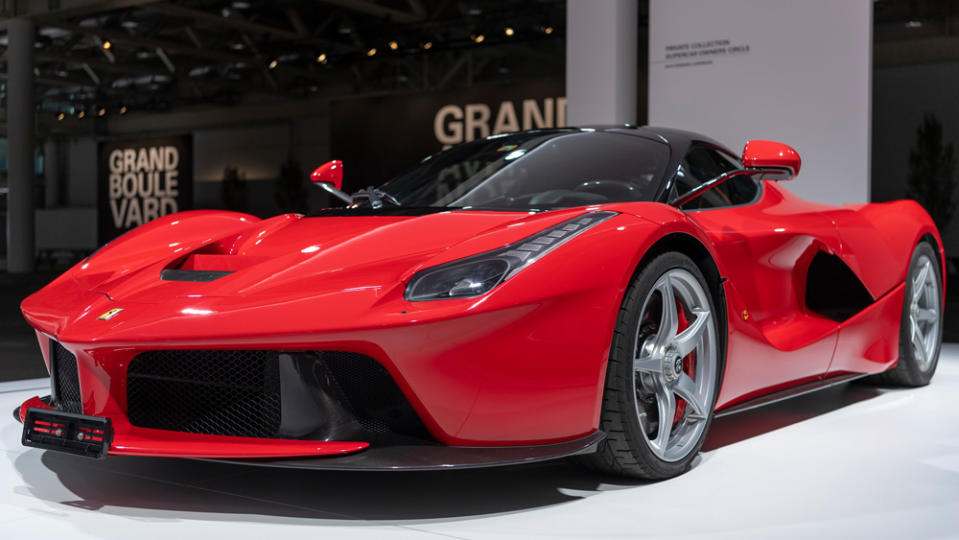
2013 was an auspicious year for supercars, with no fewer than three major releases debuting from McLaren, Porsche, and Ferrari and earning the “Holy Trinity” nickname. Though fiercely individual, each of the trio claimed a hybrid power-train layout.
Of the three, only the Ferrari LaFerrari boasted a V-12 engine— and a raucous, naturally aspirated one, at that. The LaFerrari also happened to be the most powerful (and, unofficially at least) the most charismatic of the wild bunch. Eponymously named to suggest it was the quintessence of the Ferrari nameplate, the 950 hp hypercar may go down in history not only as the pinnacle of its era, but also as one of the greatest prancing horses of all time. — Basem Wasef
McLaren P1
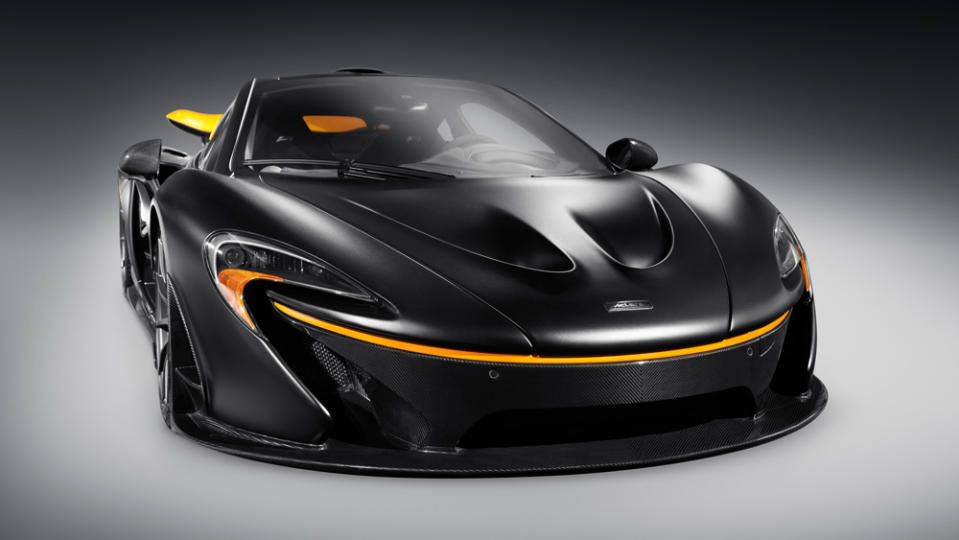
Of the three renowned hybrid hypercars that debuted in 2013, two (the Ferrari LaFerrari and Porsche 918 Spyder) hailed from long-established carmakers, while the other—the McLaren P1—was a relative newbie on the scene. Not that the British manufacturer hadn’t earned itself a spot in the hypercar pantheon with the 1990s-era legendary F1, but the lengthy absence made building this flagship like starting from scratch.
McLaren used advanced carbon-fiber construction based on its lesser, more approachable (relatively) offerings, but the top dog P1 claimed a screaming 903 hp and a remarkably lightweight chassis, which made it a more than worthy contender against the supercar establishment of the time. —BW
Porsche 918 Spyder
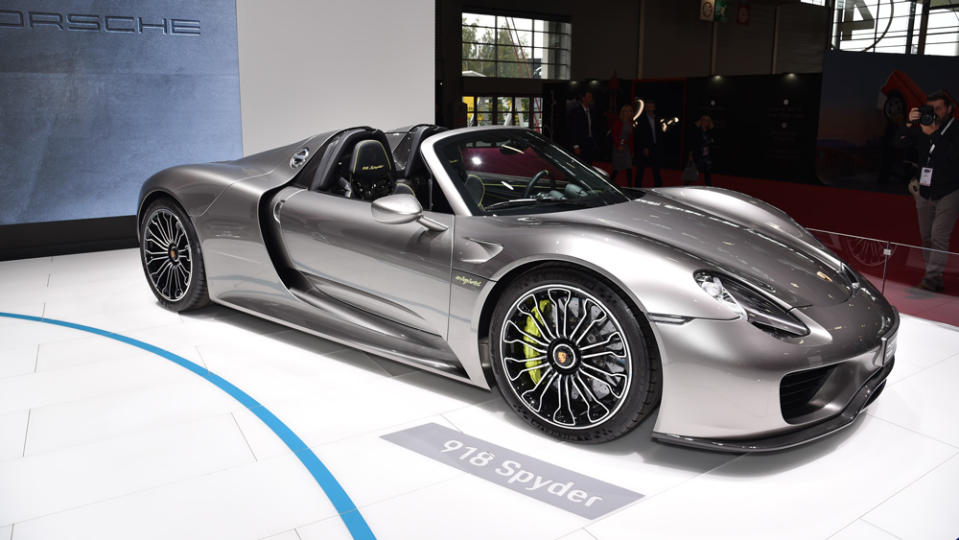
The 918 Spyder was a true game changer, demonstrating the potential of plug-in hybrid technology in the supercar stratosphere. A naturally aspirated, 4.6-liter V-8 with 599 hp got added power from two electric motors, for a total output of 877 hp and 944 ft lbs of near instant-on torque.
Penned by Porsche’s chief designer, Michael Mauer, the 918 was first shown at the Geneva Motor Show in 2010 as a concept to gauge market interest, going into production in late 2013 with a base MSRP of $845,000. The entire allocation of—surprise—918 units, sold out by the end of 2014, so eager were VIP Porschephiles to acquire the most powerful street-going Porsche ever made. Production ended by mid-2015, and the 918 remains a highly desirable collector car today. — Robert Ross
Ferrari SF90 Stradale

While the days of Maranello’s 12-cylinder halo rockets may be fading in today’s eco-climate, the eight-cylinder SF90 Stradale more than delivers. Billed as a street car tribute to Ferrari’s SF90 Formula 1 machine, the SF90 Stradale is an unabashed hypercar boasting 1,000 hp from three electric motors and a twin-turbo V-8.
Its combination of exceptional hybrid power-train performance and dramatic looks pull from the best of existing aft-engined models. Note the nod to the 488’s flank scoops as well as to the marque’s racing pedigree—the nose simply screams motorsport, which this car salutes by name: Scuderia Ferrari, 90 years. — Marco Della Cava
SSC Tuatara
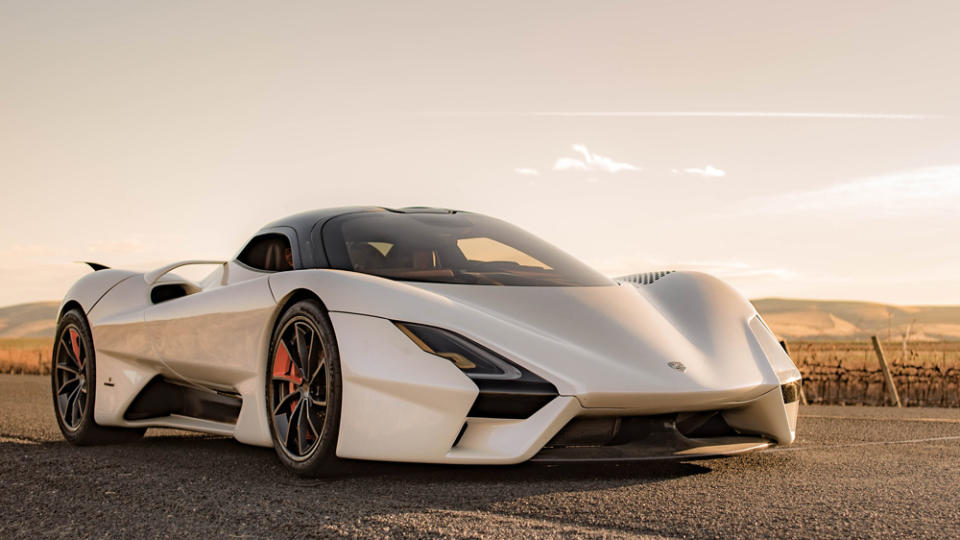
To reach 300 mph. That’s the target that Washington State–based SSC North America has for its new SSC Tuatara hypercar. To hit that mark, the carbon-fiber–bodied Tuatara—named after a spiny lizard found in New Zealand—carries a 5.9-liter twin-turbo V-8 packing a massive 1,726 hp.
Production has already kicked off with the goal to build 100 examples, each priced at $1.6 million. SSC isn’t new to the high-speed business. In 2007, its 1,287 hp Ultimate Aero clocked 256.14 mph. The record stood for three years before Bugatti’s Veyron Super Sports came along. But on January 17, 2021, the SSC Tuatara took the record back with two runs that averaged 282.9 mph, and the results were verified by Racelogic. More recently still, it officilly clocked 295 mph. —HW
Aston Martin Valkyrie
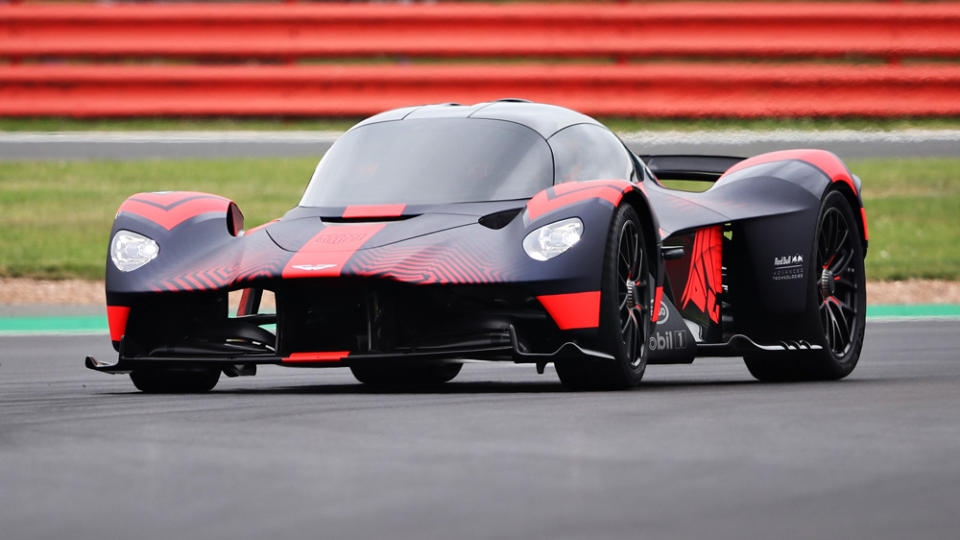
Supercar greatness in the form of Aston Martin’s Valkyrie is now in production The model is a new benchmark for the automaker when it comes to street-legal, production-car performance. It’s what happens when you bolt a 1,000 hp, 6.5-liter V-12, along with a 160 hp Rimac-developed hybrid-electric system, into a lightweight, super-strong carbon monocoque.
And if that wasn’t impressive enough, remember the car has been designed by Adrian Newey, a rock star in Formula 1 design and the current chief technical officer for Red Bull Racing. Production will be limited to 150 examples, each costing $3.2 million. —HW
Rimac Nevera
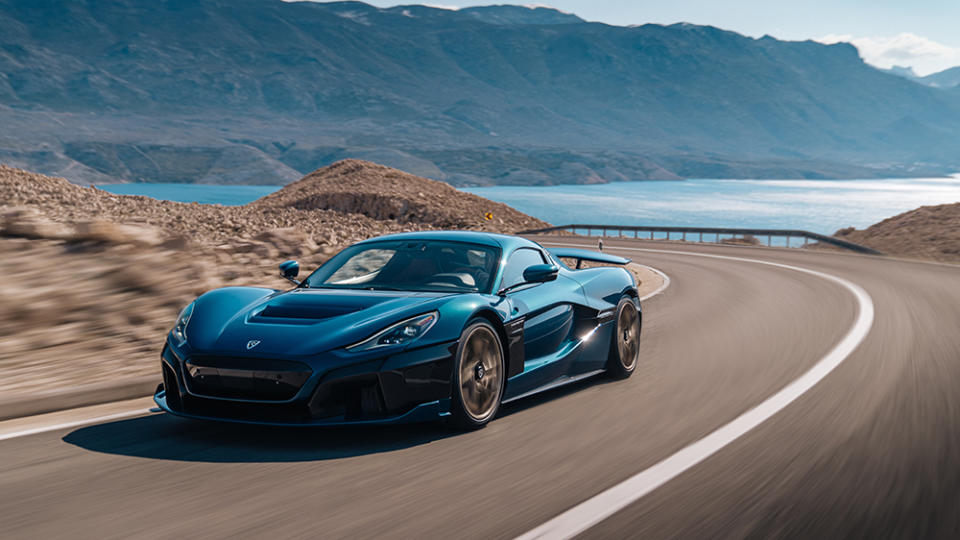
Landmark cars often hail from unexpected places, but the Rimac Nevera has dealt earth-shattering blows to the supercar microcosm. For starters, the battery-powered Nevera obliterated internal combustion records by routing 1,914 hp to all four wheels, eclipsing zero-to-60 mph times of everything from McLarens to Koenigseggs. More shockingly, the EV hypercar is the brainchild of 33-year old Croatian wunderkind Mate Rimac, who founded the firm in 2011.
The Rimac Nevera’s early impact arose from its sensational performance stats, but the legacy of this hypercar will transcend a mere model. In summer 2021, the Croatian startup purchased a majority stake in Bugatti, marking the first (and likely not the last) time a legacy supercar brand falls under the control of an EV upstart. —BW
Mercedes-AMG One
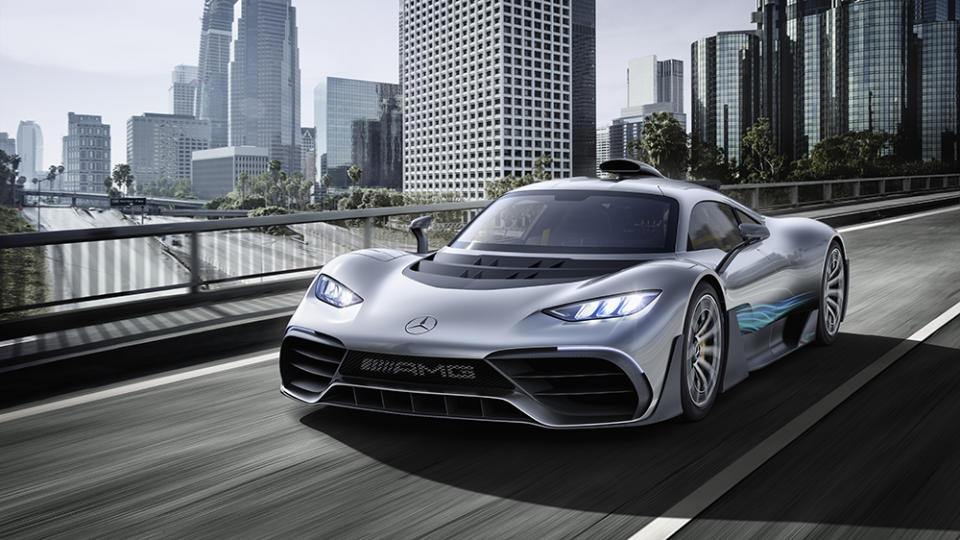
How can a car that just entered production rank as one of the supercar “greats” of the 21st century? Because we’re oh-so-confident that the 1,000 hp Mercedes-AMG Formula 1 racer for the street appears next summer, it continue to be mind-blowing for years to come.
Unveiled back in 2017 as the Project One concept, this road-going monster was plagued by technical challenges, but then there’s a lot going on when you basically build a Formula 1 car you can take on the freeway.
Powered by a hybrid-boosted, 1.6-liter turbo V-6 and a trio of electric motors, it’s expected to cover zero to 124 mph in less than 6 seconds and top out at 217 mph. Not surprisingly, all 275 examples of these $2.6 million tour de forces are taken. —HW
Koenigsegg Jesko
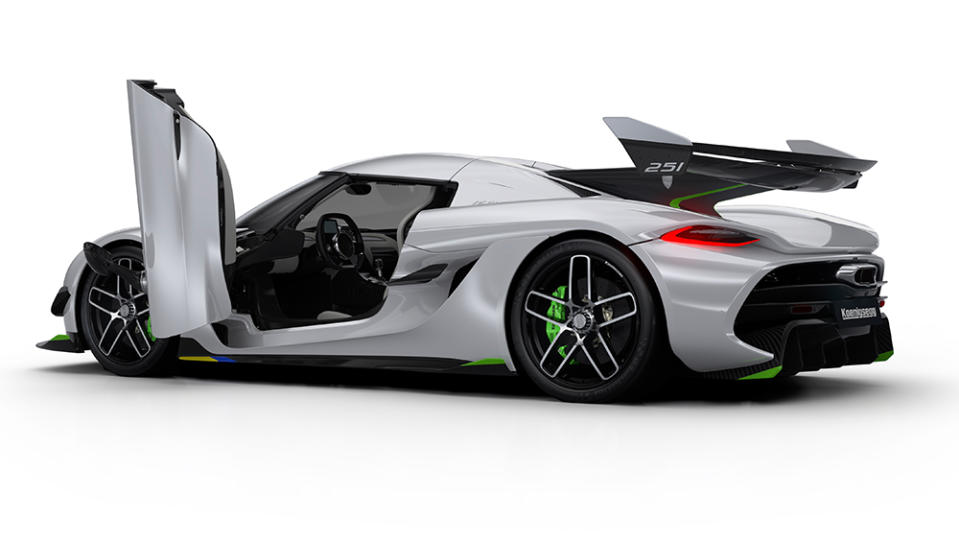
Back in 2017, Sweden’s Christian von Koenigsegg saw his Agera RS become the world’s fastest production car with a two-way top speed of 277.9 mph. The Agera’s successor, the mega-winged, 1,660 hp Jesko—named after Christian’s father—may have what it takes to top the Bugatti Chiron Super Sport’s 304.7 mph mark.
The $3 million Jesko’s go-fast technology includes a screaming, 5.0-liter twin-turbo V-8, which features the world’s lightest V-8 crankshaft, weighing a mere 28 pounds. It’s no wonder that all 125 examples of the model scheduled for production have been presold. —HW
Pininfarina Battista
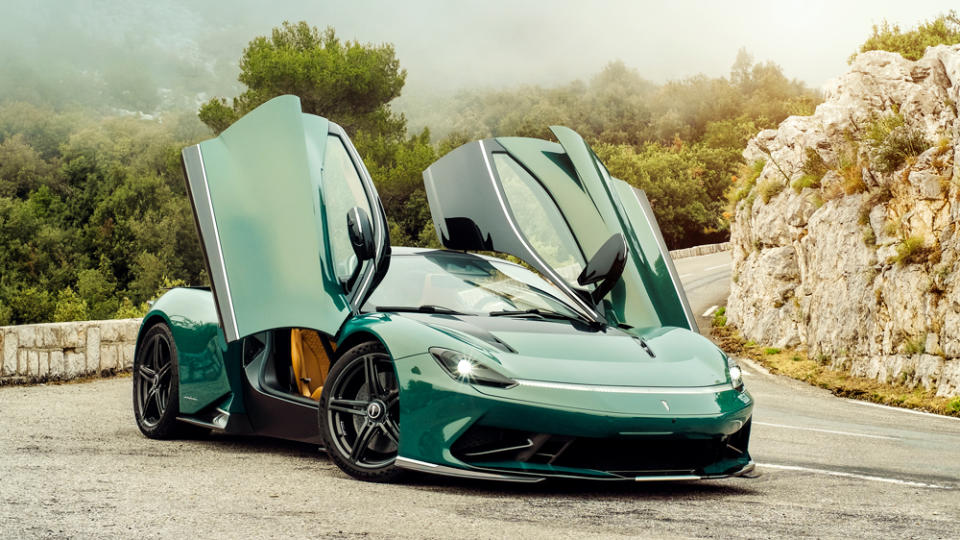
Automotive nameplates don’t come more legendary than Pininfarina. The Italian studio’s 62-year association with Ferrari, for example, created such icons as the 275 GTB, 365 GTB/4 Daytona and that Tom Selleck Magnum P.I. classic, the 308 GTS. The Cadillac Atlante? Not so much.
With a little help from India’s Mahindra Group, who rescued Pininfarina in late 2015, and the Croatian EV electric geniuses at Rimac, comes the sensational Pininfarina Battista hypercar. Packing 1,900 hp and 1,696 ft lbs of torque from its 120 kwh lithium-ion battery pack and quad motors, this truly-gorgeous electric two-seat coupe can slingshot from zero to 60 mph in 1.8 seconds, and run zero to 186 mph in 12 seconds. Flat out, it’ll hit 217 mph before the electronic nannies kick in. And the range is over 230 miles.
The first of the 150 cars being built—priced starting at $2.2 million each—has already been delivered. Want something really special? There’s a lavishly equipped Anniversario edition, of which only five will be produced. They’re priced closer to $2.9 million but, alas, all have been sold. —HW
Lotus Evija
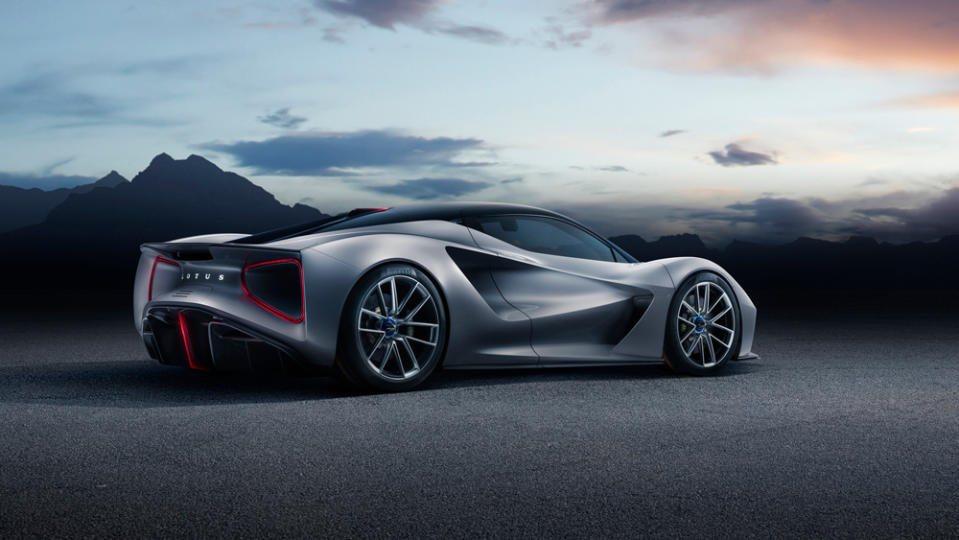
It’s simply the most powerful series-production road car ever built. It packs an astonishing 2,011 hp and 1,256 ft lbs of torque. That’s enough to catapult this hip-high projectile from zero to 62 mph in less than three seconds and whisk it from zero to 186 mph in just 9.1. Top speed? That’s limited to 217mph.
This is the all-electric Lotus Evija from the fabled British sports-car maker founded by the visionary Colin Chapman back in 1952. The new Evija—it supposedly means “the living one”—is all carbon-fiber monocoque, Le Mans–inspired aerodynamics and a state-of-the-art electric power train developed by the technical wizards at Williams Advanced Engineering.
And what a power train. With prodigious electric motors at each wheel, and a mid-mounted battery pack echoing Lotus’ tradition of mid-engine positioning, pure electric driving range is around 250 miles. Hook it up to an 800 kw charger and the whole pack will replenish in just nine minutes.
Only 130 examples of the Evija will be built, with first deliveries in early 2023. As for the price, expect to pay around $2.3 million. —HW
Ferrari Daytona SP3
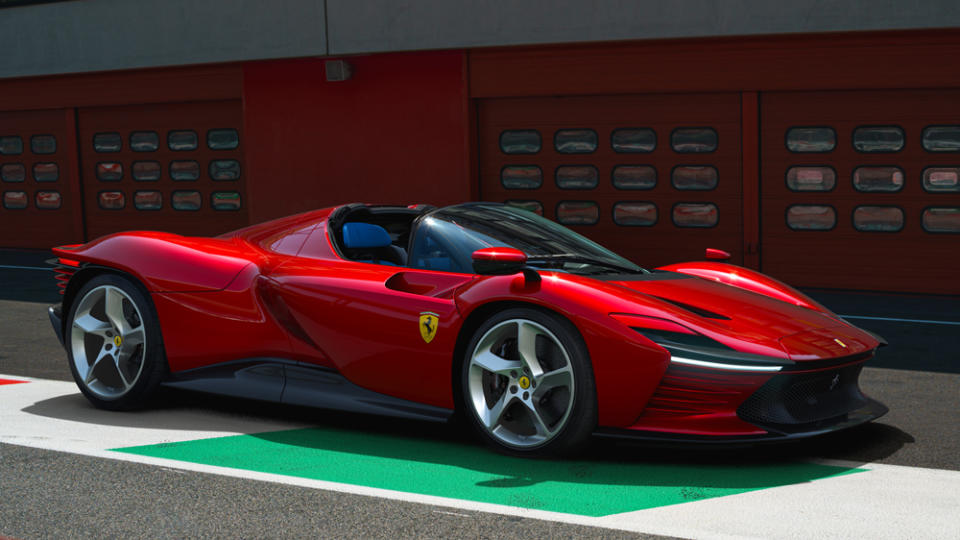
The Icona series of limited-production models tips a hat to the past by wrapping modern underpinnings with retro-futuristic skins. The third Icona to hail from Modena is the Daytona SP3, which recalls the Ferrari 330 P4s which finished first, second, and third at the 24 Hours of Daytona in 1967.
Though its air intakes and aerodynamics are functional, the spirit of the SP3 is strictly nostalgic—specifically its naturally aspirated V-12 that revs to 9,500 rpm and produces 829 horsepower. From its swollen fenders to its dramatically straked rear end, the $2.2 million Daytona SP3 will serve as kinetic art when its 599 owners take delivery of their special steeds. —BW
Hennessey Venom F5 Roadster
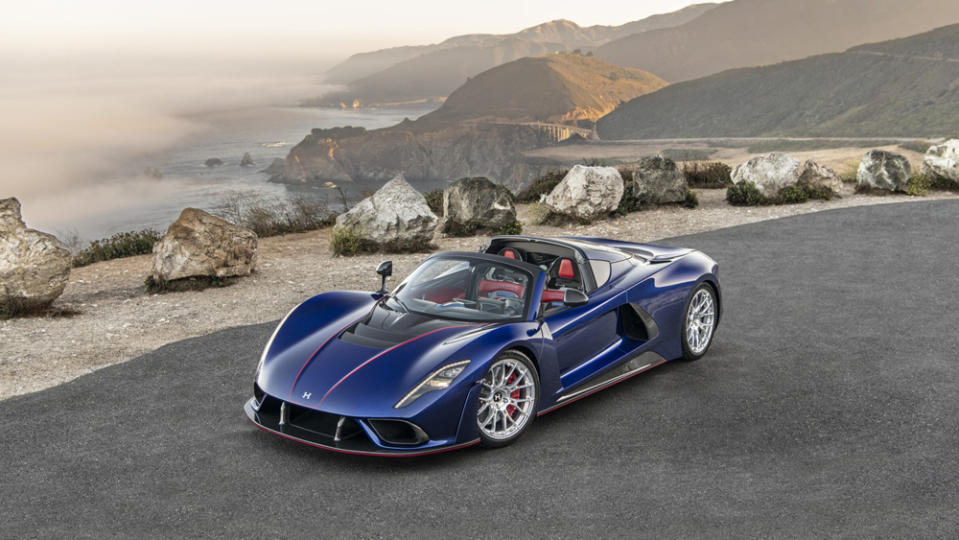
We loved the outrageous 1,817 hp Venom F5 Coupe from maverick Texas supercar builder John Hennessey and his team at Hennessey Special Vehicles. When it debuted back in 2021, the Venom F5 was fast, furious and designed to shatter the elusive 300 mph barrier. While it has yet to hit that particular bullseye, a recorded max of 271.6 mph certainly shows its potential.
Now it’s the turn of the new, Venom F5 Roadster to go for 300 mph. Being powered by the same 1,817 hp, 6.6-liter twin-turbo “Fury” V-8 as the coupe, and weighing only 45 pounds more, the open-top torpedo could have that speed benchmark clearly in the crosshairs. Just know that the lift-out, featherweight carbon-fiber roof panel—it weighs just 18 pounds—will have to stay in place for the Roadster to get anywhere close to the 300 club.
Yet, to us, the beauty of this Venom F5 Roadster will be taking off the top and hearing the full thunder of those eight cylinders as it roars to its 8,500 rpm red line. Hennessey plans to build 30 examples of the Roadster, each priced at a cool $3 million. —HW
Lamborghini Sterrato
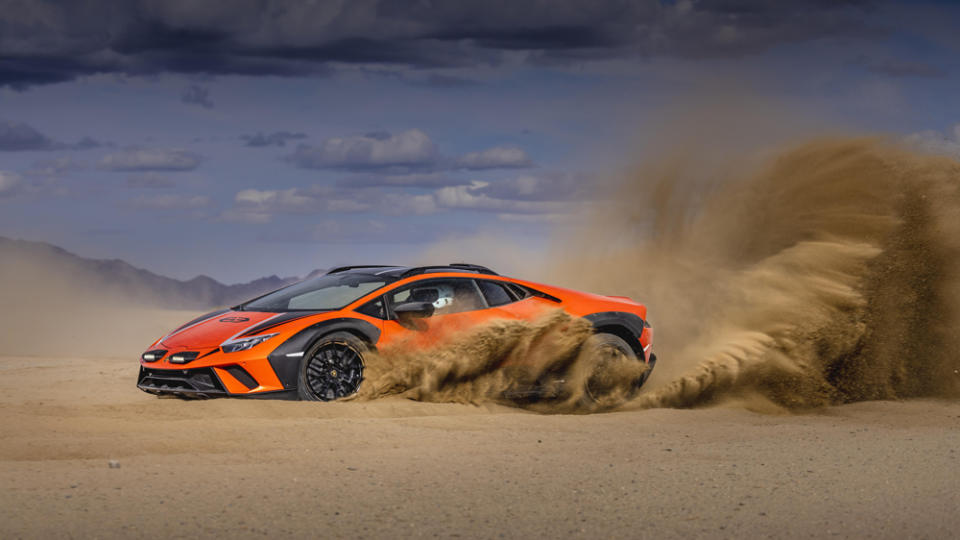
When it comes to supercars, more is usually more. But for the final edition of the V-10-powered Huracán, Lamborghini opted for a different kind of excess: knobby tires, a 1.7-inch boost in ride height, and all kinds of cladding to protect the ruggedly outfitted all-wheel-drive coupe from off-road hazards. A roof-mounted air intake and auxiliary lights on the nose harken to souped-up overlanders and rally racers, bringing a bit of go-anywhere attitude to the Lamborghini lineup where you’d least expect it.
Though Sterrato sacrifices 30 hp in the interest of drivability on loose surfaces (taking the total down to 601 hp), its Bridgestone Dueler All-Terrain tires deliver a different kind of thrill by slipping, sliding, and drifting their way through tight corners. As Lamborghini enters its hybridized and electrified era, it departs the gas-powered period with a delightfully dusty bang. —BW
Pagani Utopia
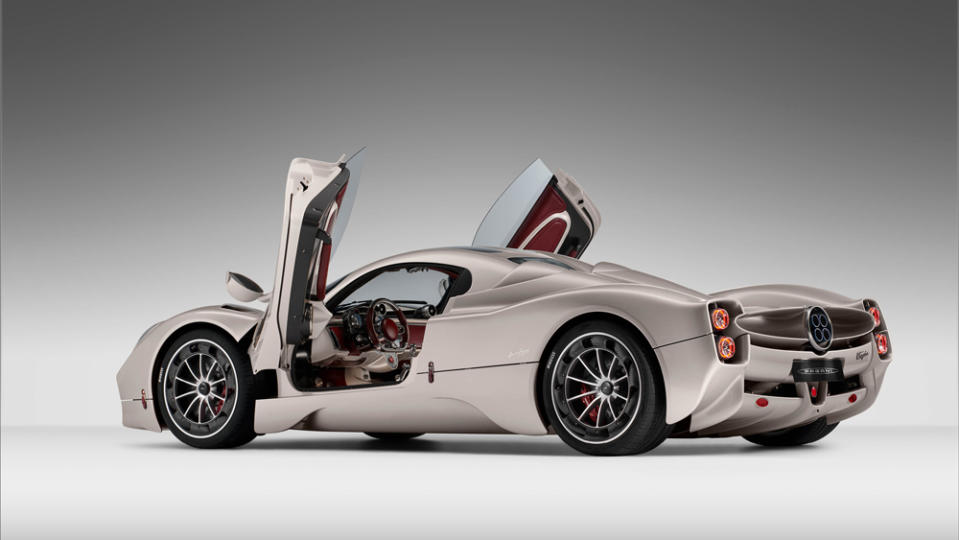
Horacio Pagani famously founded his namesake supercar atelier after his previous employer, Lamborghini, resisted his urgings to utilize lightweight carbon-fiber materials. Pagani’s follow-up to its Huayra model embraces next-level lightweighting through what the marque calls a “Carbo-Titanium” chassis, combining a carbon and titanium structure with chrome subframes that deliver a wispy 2,822-pound dry weight.
The new Utopia, a model name which references Thomas More’s 1516 text, carries over the Huayra’s 852 hp AMG V-12 powering the rear wheels, and an available manual gearbox. Sticking to its lightweight ethos, Pagani gives the automatic option an automated single-clutch unit, which is less smooth but lighter than a dual-clutch. Pagani says that 99 examples of the Utopia will be built in total when it enters production, maintaining that ideal places are in fact reserved for a select few. —BW
Lamborghini Revuelto
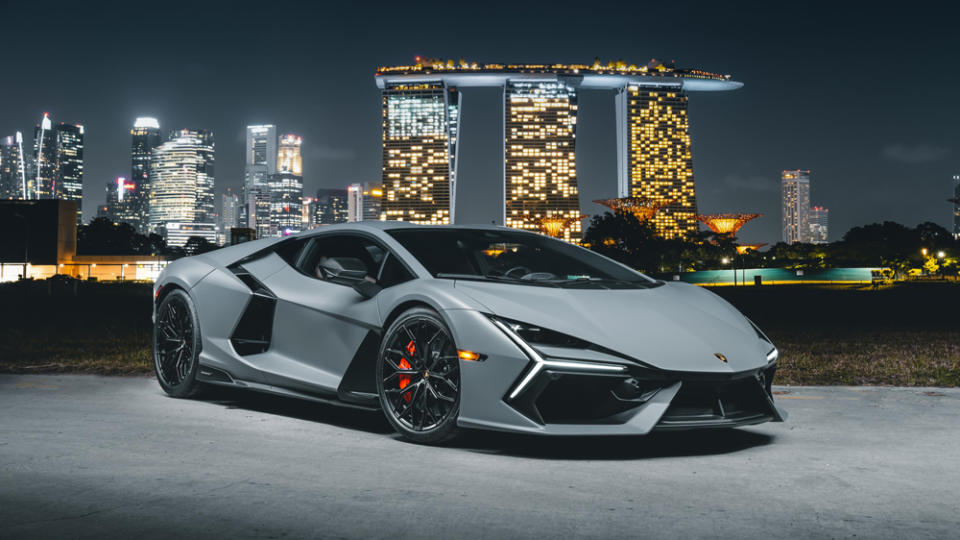
The mid-mounted 6.5-liter V-12 has been a hulking calling card for Lamborghini’s Murciélago and Aventador flagships, and the Italian brand enters electrification kicking and screaming by retaining the large-displacement mill as the centerpiece of its new hybrid power train. Augmenting the 814 hp petrol burner are three electric motors which elevate the wedge-shaped monster to 1,001 hp, the most output of any plug-in hybrid. Notably, the four-digit figure is achieved without the aid of turbochargers, which can have the buzzkill effect of diminishing the exhaust note.
With a host of updates rounding out the Revuelto, from a more spacious cabin to a long-awaited smoother shifting dual-clutch transmission, Lamborghini’s new range-topper should give the competition a boisterously charismatic run for its money. —BW
Porsche 911 GT3 RS
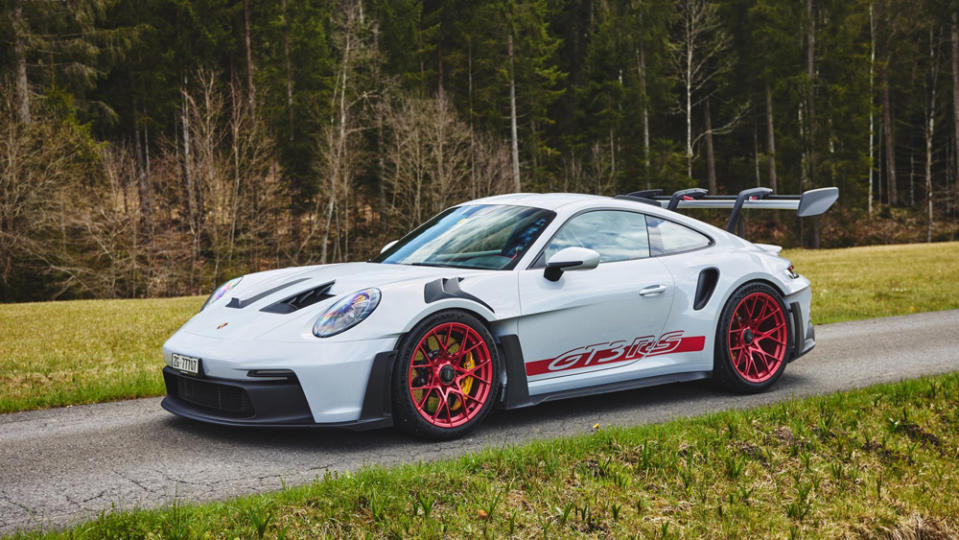
Since its unveiling back in 1999, Porsche’s constantly progressing 911 GT3 has rightly earned the title of “ultimate sports car.” A thrill ride on the road and seriously capable on track, the GT3 is the true definition of a driver’s car.
The latest GT3 RS simply ratchets everything up to 11. With that towering rear wing adding immense downforce for on-rails cornering, a naturally aspirated 4.0-liter flat-six that delivers 518 hp and screams to 9,000 rpm, plus fully adjustable, mind-reading suspension, the RS is a track missile with that rare ability to turn a good driver into a great one. —HW
Maserati MC20 Cielo
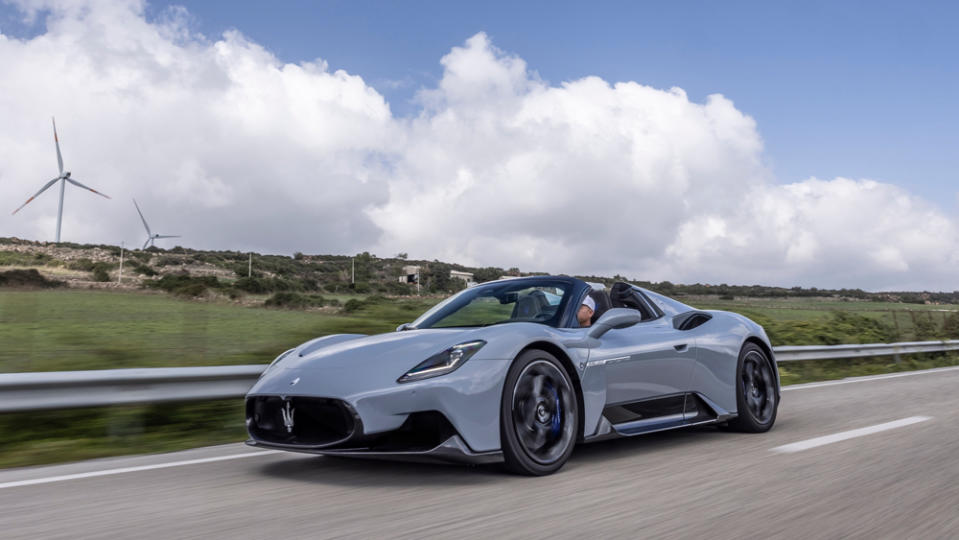
While Maserati’s blunt-instrument MC12 from 2005 was arguably the Italian marque’s first true supercar, it was little more than a thinly disguised Ferrari Enzo, built in ultra-low numbers to take Maserati back to the race track. Much more convincing as a true supercar is the mid-engined MC20, with its unique carbon-fiber structure, the 621 hp 3.0-liter twin-turbo V-6 (developed in-house), and proper supercar dynamics and agility.
Introduced as a scissor-doored coupe in 2020, the newest open-top Cielo is even more of a head-turner. Both offer blisteringly quick acceleration, race car–like handling, and the ability to be a daily driver. Look for an all-electric version coming soon. —HW
Zenvo Aurora
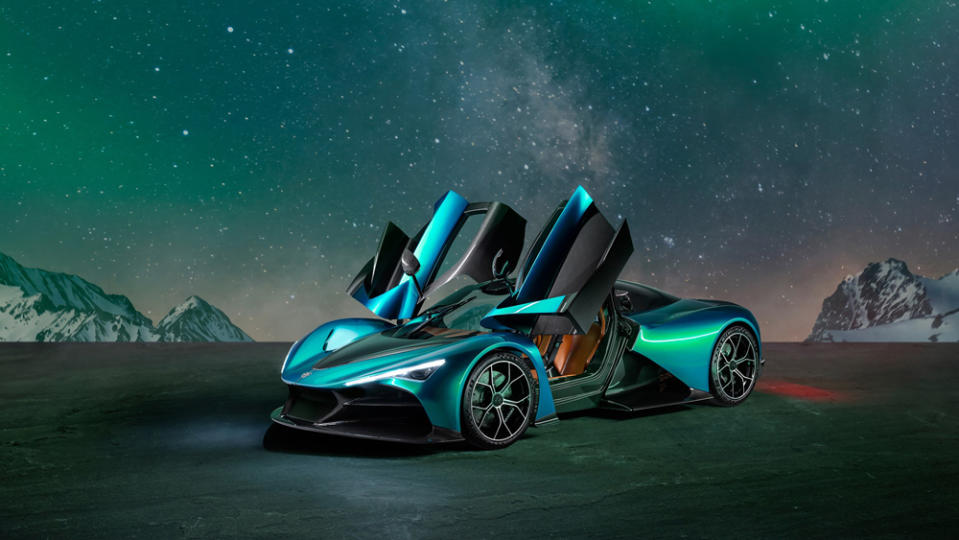
Danish marque Zenvo named its newest and most-potent rocket ship after that rare celestial phenomenon, the aurora borealis. A good choice considering this Aurora aims to accelerate close to the speed of light, well, it seems like it. Powered by a quad-turbocharged 6.6-liter V-12 boosted by twin electric motors delivering up to 1,850 hp, the cars sends zero-to-60 mph at right around 2.0 seconds with a top speed of 280 mph.
Two versions will be on offer when the car goes into production in 2025; the track-focused, rear-wheel-drive Agil, and the all-wheel-drive Tur grand tourer. We see it as a looming disrupter in the hypercar market. —HW
Gordon Murray T.50s Niki Lauda
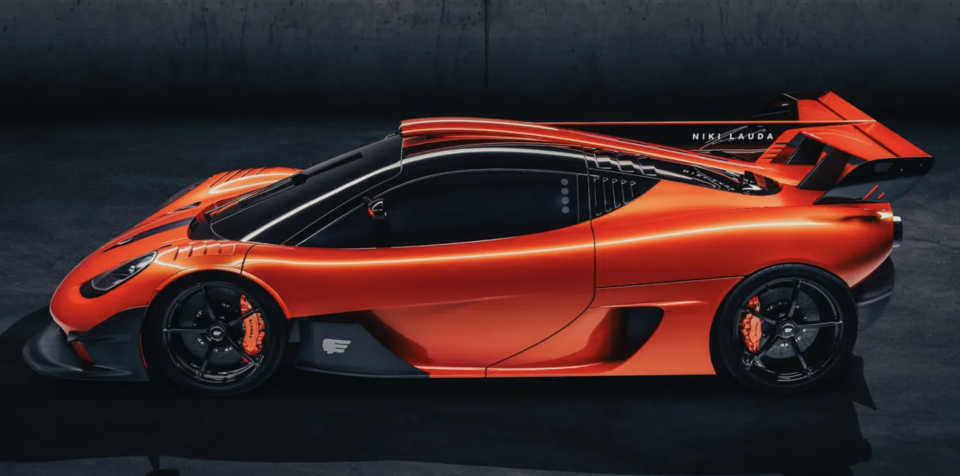
Gordon Murray is the genius behind the original McLaren F1 road car, but also for much of McLaren’s dominance of Formula One back in the late 1980s and early 1990s. And the 78-year-old isn’t done making blistering performance machines. Case in point: the GMA T.50S Niki Lauda, a track-only supercar that’s lighter and more powerful than its road-going brethren, the T.50. This $3.86 million carbon-fiber hewn missile is powered by a 3.9-liter naturally-aspirated V-12 from Cosworth, optimized to produce 772 horsepower. At a scant 1,924 pounds, GMA states that the power-to-weight ratio per ton exceeds that of naturally aspirated LMP1 cars. — Sean Evans
Ferrari 12Cilindri
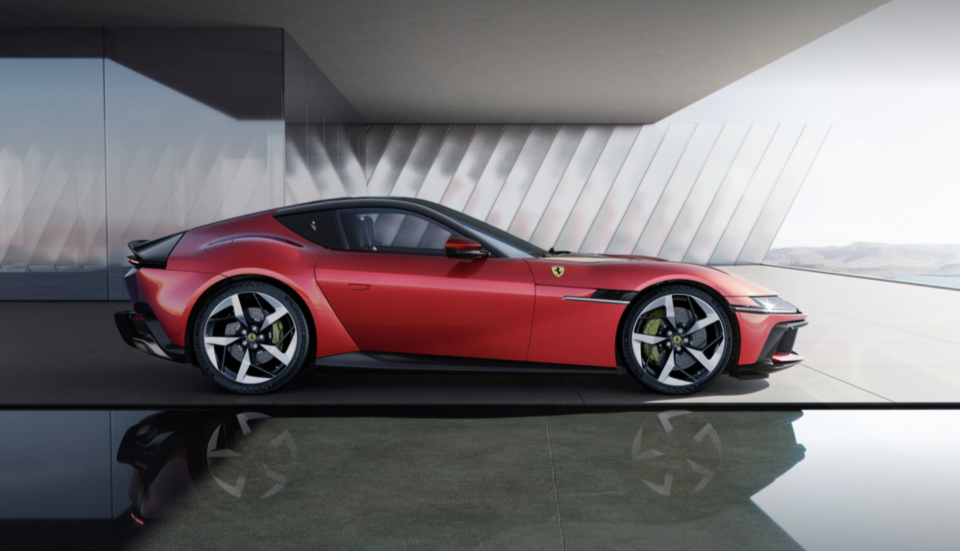
While the bulk of the supercar strata is sussing out how to make hybridization work, Ferrari engineers are non impressionato. Thus, the GT successor to the 812 Superfast, the 12Cilindri, is powered by a huge, naturally aspirated V-12. To the heroes in Maranello, we say molto bene. That 6.5-liter mill will rev to 9250 rpm and has 819 horsepower and 500 lb-ft of twist. In-house designer Flavio Manzoni and his team deserve a standing ovation for the overall shape and silhouette of the $417,000-plus 12Cilindri, which looks better than the original Daytona coupe to which it pays homage. —SE
Lamborghini Sián FKP 37
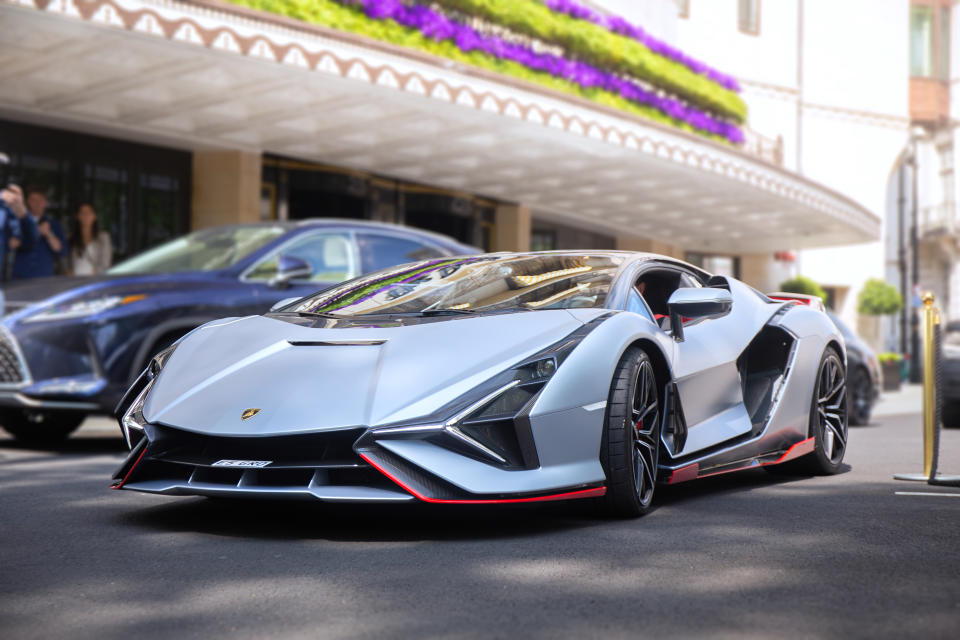
Sián means “flash of lightning” in Bolognese, and it’s a fitting application for this hybridized V-12 from Lamborghini, the first-ever electrified vehicle from the Italian marque. (The FKP 37 is a nod to former Volkswagen group chairman Ferdinand Karl Piëch and his birth year.) That combination of the 6.5-liter V-12 and a 25 kW electric motor produce 808 horsepower, which will fling occupants to 60 in under 2.8 seconds. Production of the Sián was limited to 63 units for the coupe and 19 roadster models, all of which sold instantaneously, with starting prices around $3.7 million. However, some are on the market for $5 million. —SE
Bugatti Tourbillon
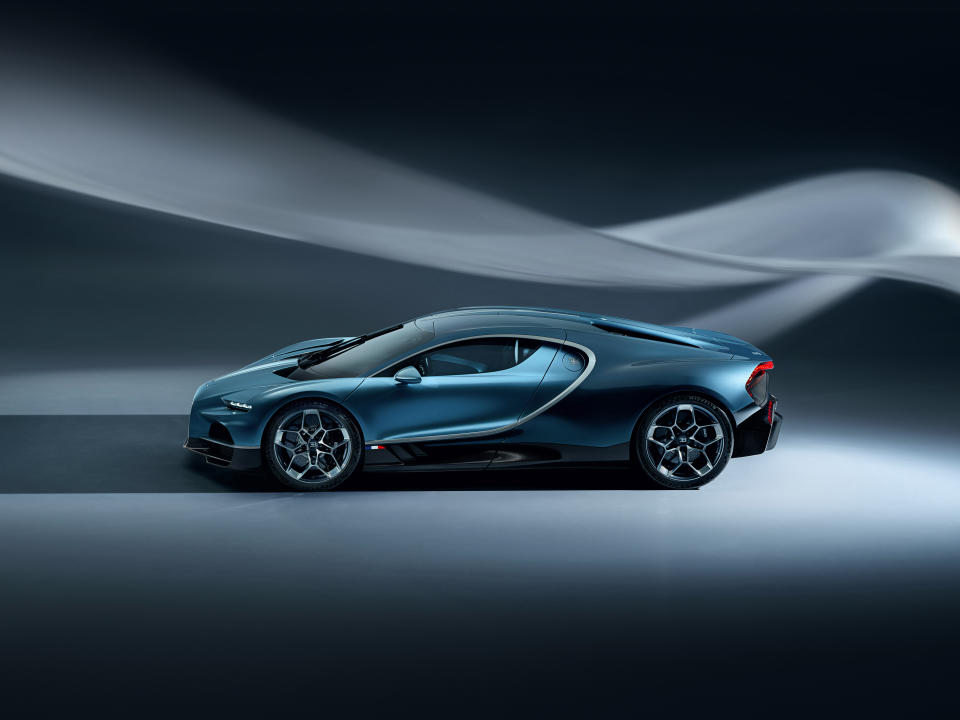
The successor to the Chiron claims a series of Bugatti firsts: the first V-16, the first electrified Bugatti, and the first Bugatti under the stewardship of new CEO Mate Rimac. This $4.6 million-plus coupe is actually smaller and lighter than the Chiron, relatively unheard of when transforming a combustion vehicle into a hybrid, but Rimac and the rest of the engineers and designers in Molsheim managed to pull it off through smarter component integration into the monocoque chassis. Packing 1,800 horsepower, the Tourbillon’s top speed, per Bugatti reps and press materials, is 276 MPH, but please note that the Swiss-watch-inspired speedometer goes up to 550 KPH—or 341 MPH. Expect high-speed runs well into the 300s. —SE
McLaren Speedtail
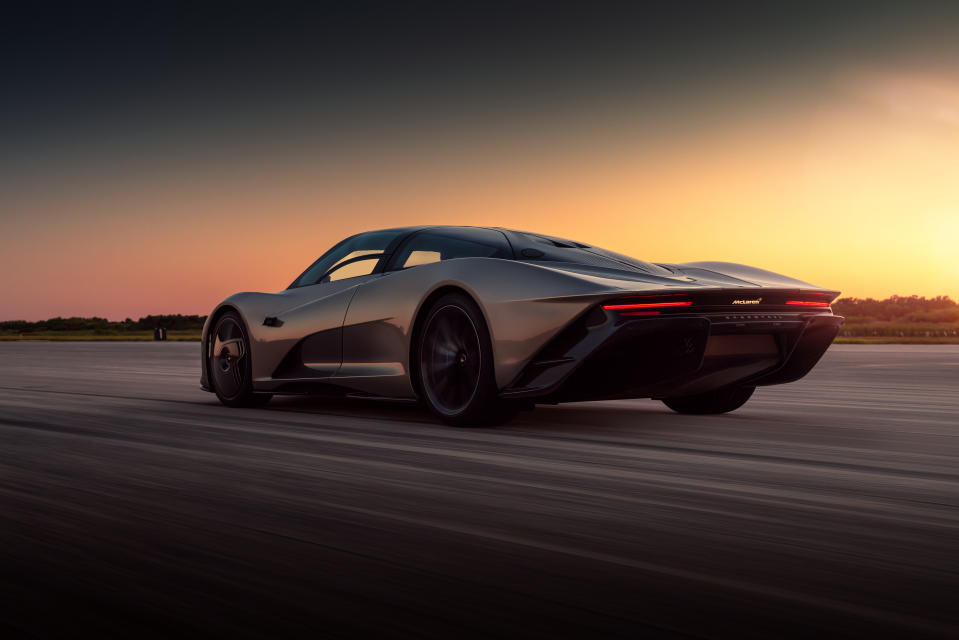
The Speedtail is the second McLaren to offer a trio of seats, the first being the revolutionary McLaren F1. With only 106 units produced—each sold for at least $2.6 million—this 1,035-horsepower, 250-mile-per-hour hybrid will turn heads whether parked on a concours lawn or rocketing by you on a freeway. (And it will be a blur: the Speedtail will go from a dead stop to 186 MPH in 13 seconds.) Magic abounds in the Speedtail, from the flexible carbon fiber ailerons integrated into the tail of the clamshell, to the 24K gold toolkit that comes standard, but the customization options are where these supercars shine. For example, if you wish for crushed up diamond dust to be included in the paint, McLaren will do that. Or if you want a platinum badge up front, that’s available, too—for $56,000. —SE


